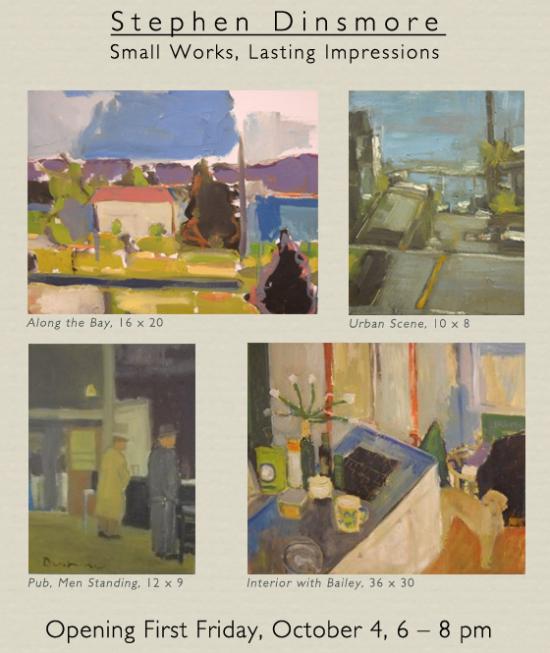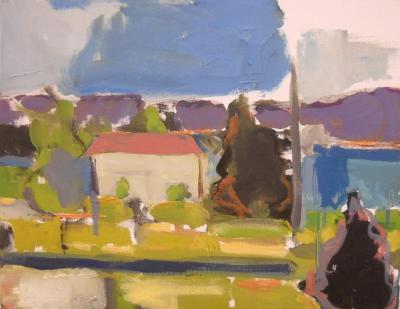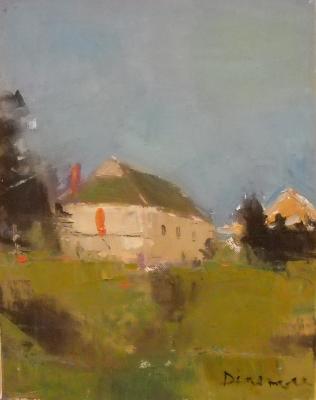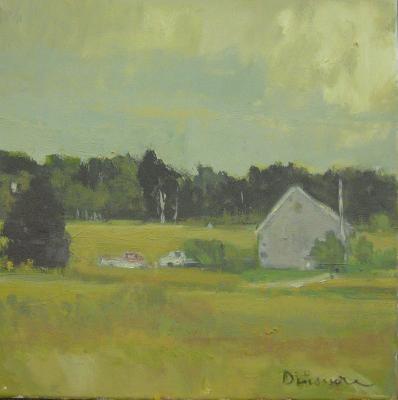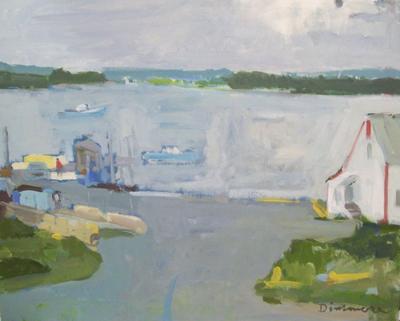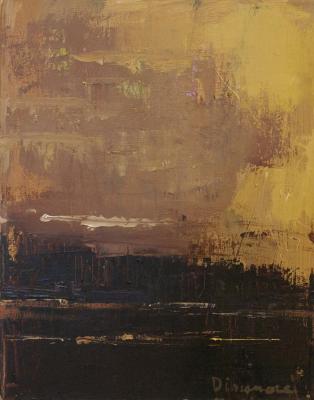About the exhibition
–by Michael J. Krainak, free lance writer in the visual arts
Small Works-Lasting Impressions, Modern Arts Midtown’s October exhibit featuring current work from painter Stephen Dinsmore, continues the gallery’s fall motif: the art of form and structure.
The oil paintings on display take their cue from the show’s title with their minimalist point of view and impressionistic style that viewers have long identified as Dinsmore’s signature.
Much of his work here is the product of recent travels in Maine and Florida, particularly such landscapes as “Along the Bay and “Flagstick.” Though the finished paintings may appear to be that of a plein air artist, Dinsmore’s process and his work’s structure and form are more a matter of “discovery and arrangement.”
“I may start a painting by going down the road towards something seen,” he explains, “but one of the beauties and exigencies of painting is that I am not locked into the original impetus. I can change shapes, rearrange things, take out, put things in, and add colors or harmonies of tone, etc.”
This method of editing and reconstruction belies the nuanced simplicity of his paintings, which references poet Wordsworth who wrote of his own art: “Poetry is the spontaneous overflow of emotions recollected in tranquility.” So too for Dinsmore’s visual imagery whose lasting impression leaves more of a feeling rather than an idea or ideal. MAM owner and artist Larry Roots says this paradox of familiarity and suggestion in the exhibit’s content is due to the deliberate drawing of the viewer’s attention to the painting’s formal qualities, particularly technique and medium.
“His trademark style varies from minimal mark-making and paint strokes to dabs and clusters of paint so thick the piece resembles a structural relief,” Roots said. “With the first, you can almost count the brush strokes as well as the scratches in the thinly-layered turpentine wash. In the second, the oil paint provides structure as much as content.”
The final form of either approach ironically resembles a sketch due as much to what’s left unpainted, to what’s left unsaid. Dinsmore ‘s paintings always have a sense of immediacy, of being in the moment. They are never overworked. He always seems to know when each piece is finished. And even though his landscapes, scenarios and still lifes are finished in the studio, they seldom fail to suggest their first inspiration, their first impression—initially on the artist and now on the viewer.
Though Dinsmore creates primarily in the realist tradition, his work would never be confused with the hyperrealism of a Kent Bellows. The photographic detail of the latter draws one into a defined space and likewise defines what one sees and perhaps even feels, other than a sense of awe that actually keeps the viewer at an emotional distance from the subject. However, Dinsmore’s POV draws viewers into their own memory and imagination, allowing them to connect, identify and, in effect, complete or even expand the image; making it their own rather than trying to “figure out” the artist’s intent or interpretation.
Though Late Impressionism informs and contributes to the structure of Dinsmore’s work, their lasting impression is truly his own. It takes form because these paintings are not mere exercises of that period and popular style. Each piece is experiential even as it may reference an influence. Consider first his quiet, observational “Dining Car” which reminds one of a detached Degas with its asymmetrical composition, subdued palette and un-posed study of human nature.
More personal are his several introspective studio and domicile works, none more endearing and inviting than Dinsmore’s images of his kitchen in “Inside/Outside,” and his studio in “Interior/The Studio.” They too may suggest Van Gogh’s “The Bedroom” as well as several of his studio paintings with their similar tone, palette and brushwork. But with one major difference. Unlike Van Gogh’s settings, Dinsmore’s windows and doors are invariably open with a view beyond their threshold. There may be no place like home, but the promise of he road always beckons for the artist. It helps shape his art as much as any style or comfort zone.

